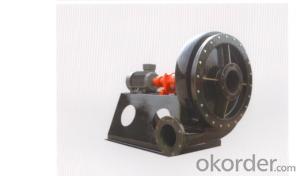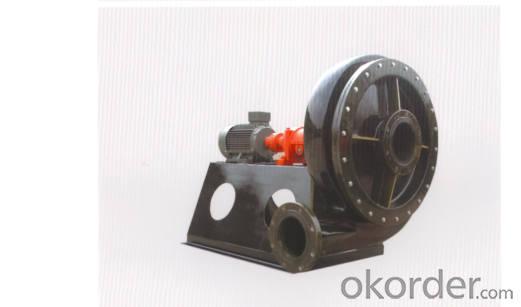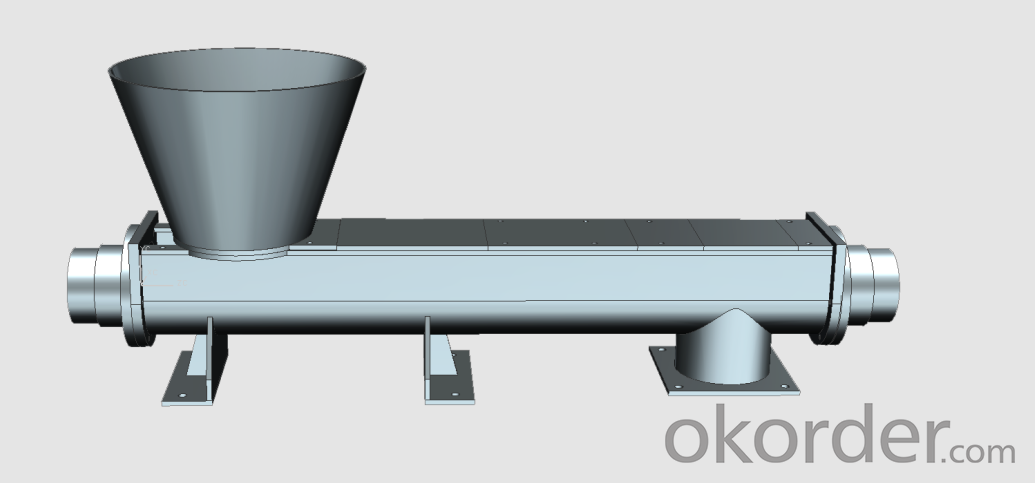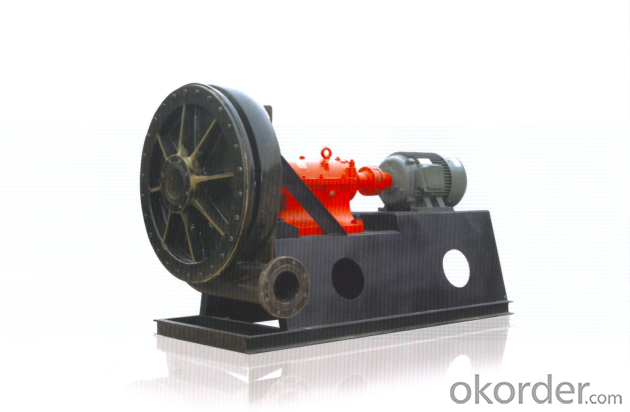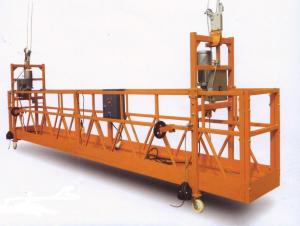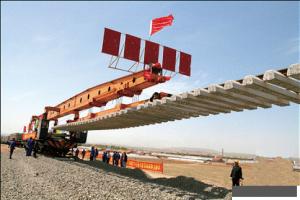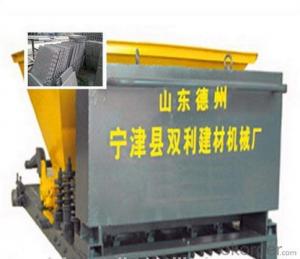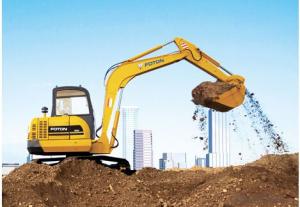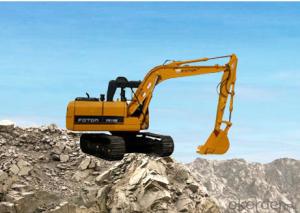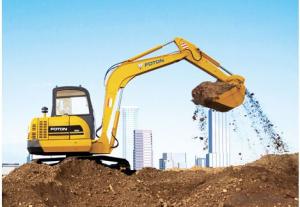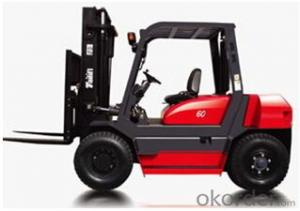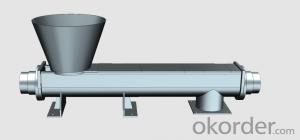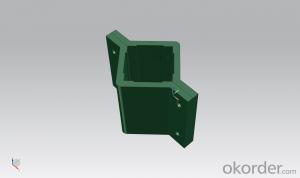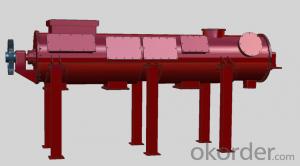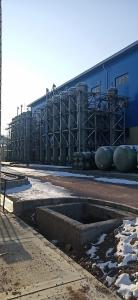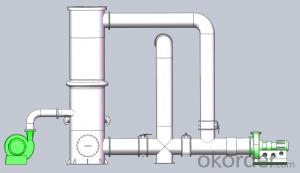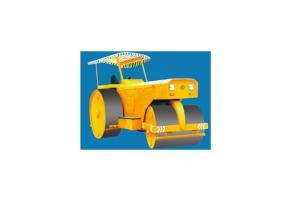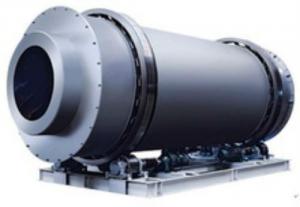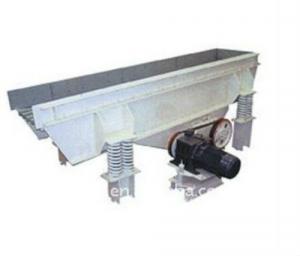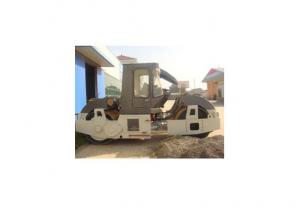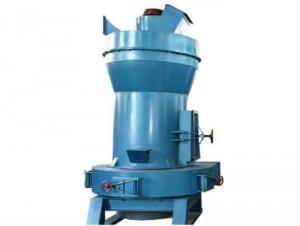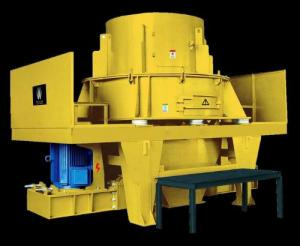CNBM Tons Potassium Sulfate (SOP) Project equipments from SOP plant
- Loading Port:
- Shanghai
- Payment Terms:
- TT OR LC
- Min Order Qty:
- 1 set
- Supply Capability:
- 1 set/month
OKorder Service Pledge
OKorder Financial Service
You Might Also Like
Tons of Potassium Sulfate Project
General
CNBM is a high-tech enterprises international chemical engineering company, who is pioneering in chemical engineering technologies, and playing a leading role in new technology development, with capability of project consulting, design,procurement, construction management and production guidance. CNBM provide services of chemical engineering and technology, with offering a scope of supply ranging from process design till the supply of completely integrated plants. CNBM master a technology of Potassium Sulfate production line, Calcium Chloride production line,sulfuric acid production line other fertilizers.We have cooperated with many international companies on projects,located Indonesia,Philippines,India,Jordan,Egypt.etc.
Potassium sulfate product quality standard
Potassium sulfate | index | standard | |
| K2O:% | ≥50 | GB20406--2006 | |
| CL-:% | ≤1.0 | ||
| H2SO4:% | ≤0.5 | ||
| H2O:% | ≤1.0 | ||
Mannheim method potassium sulfate production process:
(1) It is a production process with little environmental pollution ;
(2) Mature technology, easy to industrialize production, improved new technologies and new processes, adapt to the requirements of the market economy, enhance the competitiveness of products in the market, the quality of potassium sulfate is good, and the output is high;
Main raw and auxiliary materials supply
| NO | Name | specification | Consumption | Total annual consumption |
| 1 | Potassium chloride | K20≥60% | 830Kg/t | 83,000 tons |
| 2 | sulfuric acid | 98% | 570Kg/t | 57,000 tons |
| 3 | lime | 40Kg/t | 400t |
Introduction to the preparation of potassium sulfate production plant by Mannheim method
Raw material for producing potassium sulfate
The raw material for the preparation of potassium sulfate by the Mannheim method is potassium chloride (KCL) which has K2O ≥ 60% and 98% sulfuric acid.In the production process, the hydrochloric acid system is made into tap water, and the heat required for the reaction is provided by natural gas combustion.
The nature and use of potassium sulfate
K2SO4
Colorless or white crystal or powder, bitter and salty
Melting point: 1069 ° C, soluble in water, insoluble in ethanol, acetone and carbon disulfide, the aqueous solution is slightly acidic.
Uses: 1. Agricultural fertilizer, used in tobacco, fruit trees, sugar cane, potatoes, vegetables, etc.
2, used as a drug (a laxative) and used in the manufacture of alum, glass and potassium carbonate.
Potassium sulfate quality specifications
Appearance: colorless or white crystal or powder.
Industrial synthetic hydrochloric acid
Relative molecular weight: 36.45
Performance: colorless transparent liquid, yellow when there is a small amount of impurities, strong acid is corrosive, can work with a variety of metals.
Uses: Important chemical raw materials for petroleum, metallurgy, printing and dyeing industries, etc.
Basic principle and process flow of potassium sulfate production
A fixed bed metathesis reaction method is employed. The solid potassium chloride and 98% sulfuric acid are continuously added to the reaction chamber at a certain ratio of feed, and the reaction is carried out under the condition of pushing the homogenate at a high temperature above 500 ° C (generally controlled at 500-530 ° C). . The raw material is continuously input under the condition of maintaining the normal bed surface, and the finished potassium sulfate is continuously discharged into the finished pusher from the outlet of the reaction chamber (symmetric two places), and enters the finished product through the gas seal conveyor under the action of cooling and stirring and pulverizing. The belt machine is then lifted, crushed, and finished with a scraper into the finished silo. The hydrogen chloride gas generated in the reaction is absorbed into water to prepare a hydrochloric acid and charged into a storage tank. Exhaust gas is discharged into the atmosphere in accordance with national emission standards.
H2SO4+2KCL →K2 SO4+2HCL-Q
H2SO4 → SO3+H2O-Q
HCL+H2O → HCL·H2O(HCl)+Q
SO3+H2O → H2SO4+Q
Production equipment overview
Potassium sulfate reactor
The reaction furnace is mainly composed of a combustion chamber (upper) reaction chamber (middle) flue chamber (lower part), and is equipped with a feeding and mechanical stirring pushing device. The core device of the Mannheim method is the reaction furnace. The purity of the product, the conversion rate, the production capacity and the difficulty of operation are all related to the reaction furnace. Therefore, reactor performance is the key to the process. The reaction furnace is mainly made up of a variety of special refractory materials. It has two cavities. The middle elliptical cavity is the reaction chamber. The chamber is equipped with stirring tweezers. When the reaction, the tweezers rotate at 1.1r/min, and the materials are continuously mixed and gradually. Push around the cavity. The upper cavity of the reaction furnace is a combustion chamber, and the combustion chamber has a burner, and the heat released by the fuel indirectly heats the reaction chamber.
Overview of the auxiliary equipment of the reactor system
1. The main machine (with large reducer and motor driven spindle) provides the effect of fabric, mixing and product removal.
2.Reheater: φ1000×4600, cold air and flue gas heat exchange, to preheat the air, reduce the heat loss in the furnace.
3.Potassium sulphate finished product pusher: The pusher barrel is accompanied by a cooling jacket, which functions as cooling, crushing and transfer of the finished product (n≈5.53r/min).
4.Gas-sealed screw conveyor: the function of finished product conveying and gas sealing.
5.Finished belt conveyor: The finished product is conveyed with cooling (with magnets - prevent the iron from entering the rear equipment).
6.Finished bucket elevator: finished product delivery.
7.Finished squeegee conveyor: The finished product is conveyed with cooling jacket.
8.Dust collection bucket, dust collection fan, distributor: collect the finished dust back to the silo.
9. Carbon cooler: After the hydrogen chloride gas at the outlet of the reaction chamber is cooled by the heat exchange, the temperature is lowered to about 50 ° C, and sent to a sulfuric acid gas scrubber.
Hydrochloric acid preparation, hydrogen chloride tail gas recovery and circulating water system
1. Sulfuric acid gas scrubber (with circulating acid pump, tank): packed tower, which absorbs trace SO3 and part of hydrogen chloride in the hydrogen chloride mixed gas from carbon cooler to ensure the quality of genuine hydrochloric acid (A acid), and The acid pump outlet sends out a portion of the mixed acid to the carbon cooler to wash a trace of dust from the gas in the reaction chamber to ensure the smoothness and cooling of the carbon cooler. The mixed acid (B acid) controls a certain B e0 to be sent to the B acid intermediate tank.
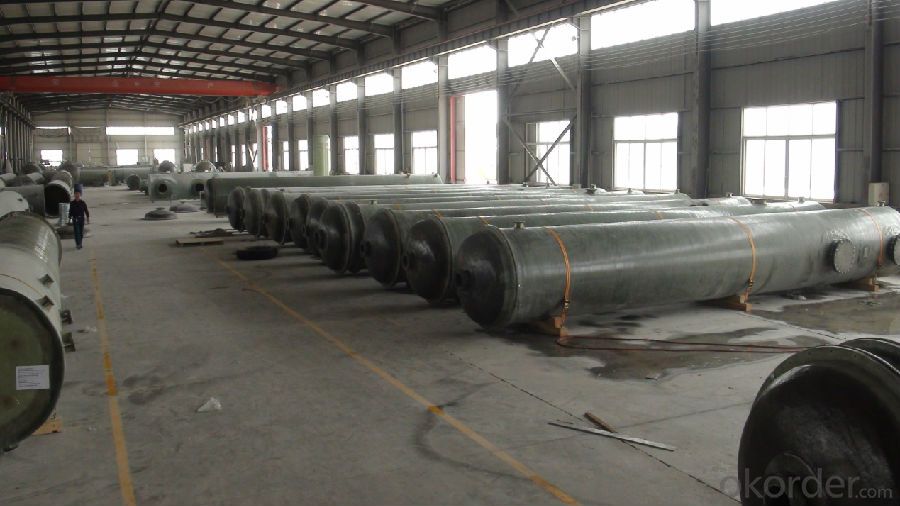
2. Hydrochloric acid absorption tower (falling film absorption tower) A: The falling acid absorption method (gas-liquid downstream) outlet acid control 18-19Be0 is sent to the intermediate tank of hydrochloric acid, and the three columns of hydrochloric acid absorption tower A are connected in parallel.
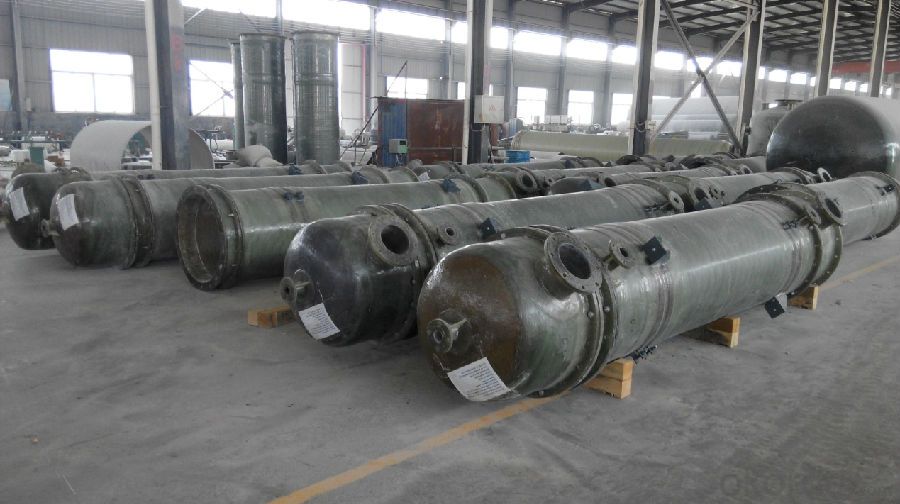
3. Hydrochloric acid absorption tower B: packed tower, gas-liquid countercurrent, acid solution enters hydrochloric acid absorption tower A, and hydrogen chloride tail gas is introduced into tail gas recovery tower through hydrogen chloride induced draft fan. The hydrochloric acid absorption tower B is connected in parallel in three.
4. Dilute acid high level tank: Provides a dilute acid solution for acid production at a stable liquid level. The dilute acid solution is from the 3# tail gas recovery tower and is cooled by a dilute acid cooler to enter a dilute acid high level tank.
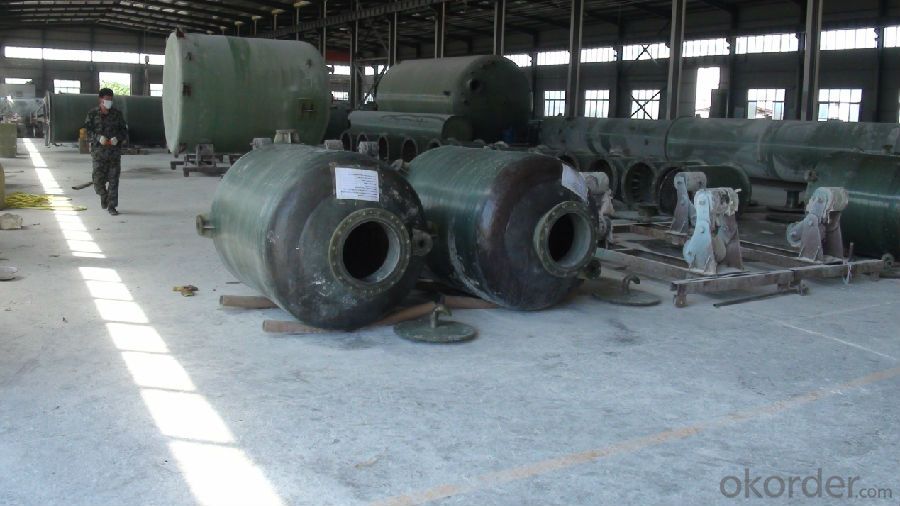
5. Hydrogen chloride tail gas recovery tower: (with circulating acid pump) packed four-column series (No. 3 → No. 6) gas-liquid countercurrent, the hydrogen chloride tail gas is basically absorbed after acid production. The tail gas is sequentially taken into the No. 3 → No. 6 exhaust gas recovery tower by the HCL exhaust fan and then discharged into the atmosphere (the exhaust gas emission complies with the national exhaust emission standard). The liquid phase flow is No. 6 → No. 5 → No. 4 → No. 3, No. 3 tower The higher concentration of dilute hydrochloric acid is sent to the sulfuric acid gas scrubber.
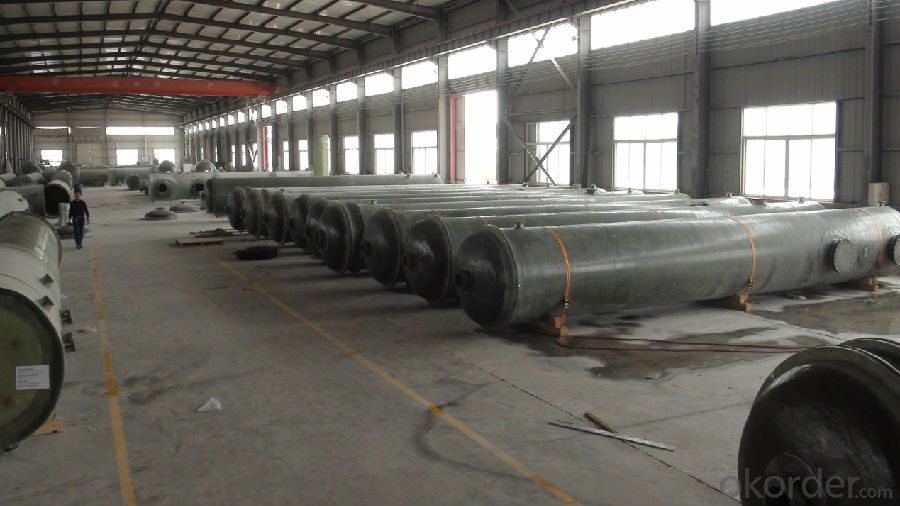
6. Hydrogen chloride tail gas exhaust fan: The hydrogen chloride gas is pumped in from the reaction chamber to the national atmospheric emission standard GB16297-1996, and discharged into the atmosphere through the exhaust gas chimney to maintain the micro-negative pressure in the reaction chamber to maintain the normal production of potassium sulfate.
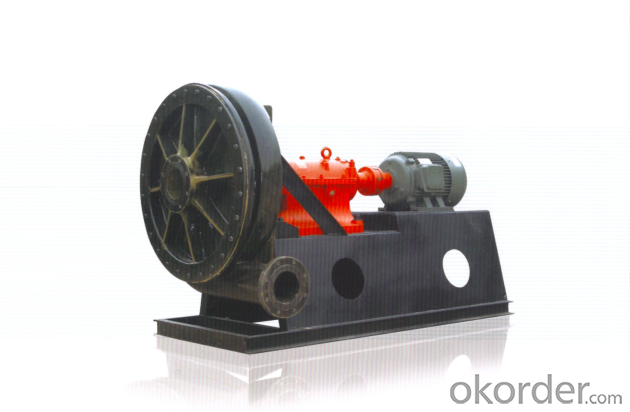
7. Target fan: The hydrogen chloride gas is pumped into the process from the furnace door, and after being absorbed by the environmental protection tower, the exhaust gas chimney is discharged into the atmosphere.
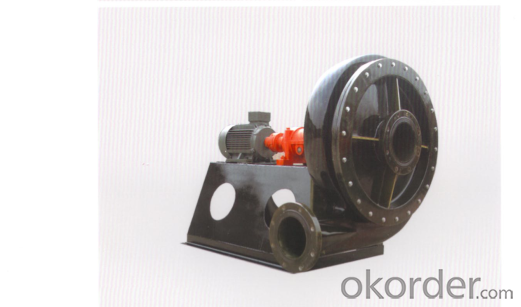
8. Intermediate tank of hydrochloric acid (A, B acid): a total of four, a single tank volume of about 12 cubic meters (horizontal). It has the function of intermediate storage and transfer of hydrochloric acid.
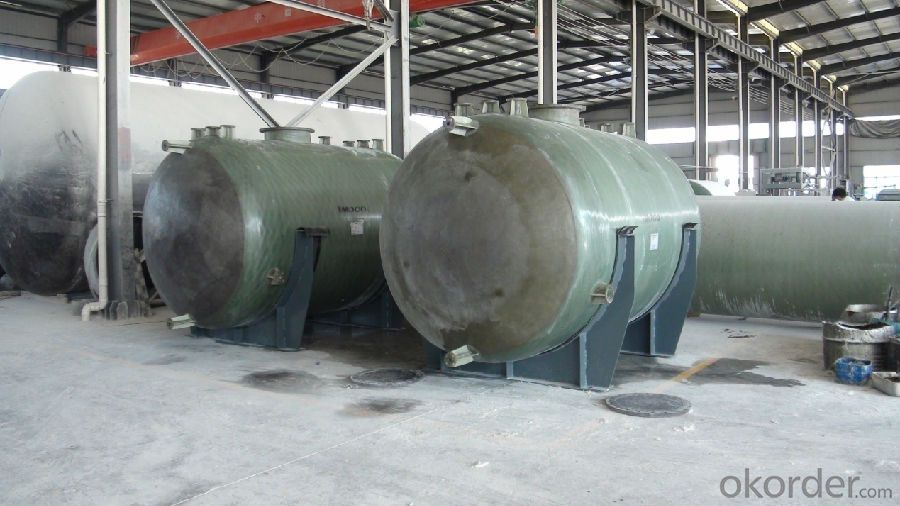
- Q: What axis is the mechanical keyboard better?
- The tea axis is considered a middle ground between typing and playing. The green tea shaft axis, the sense of paragraph is much weaker; for the black shaft, and not go straight up. It's easy to be accepted by the user. Tea axis is two suitable for office games. It is more appropriate to call tea axis as "universal shaft".
- Q: what technology/machinery is used to sort recycling?
- Modern Technology and various machinery is used, Magnets for metals, Humans, Air, Cameras, you name it its used.
- Q: Can a private project manage the construction machinery?
- According to the Chinese Engineering Machinery Industry Association statistics, as of the end of 2014, the main products Chinese engineering machinery holdings of about 7 million units, which can travel, national mandatory requirements on the pavement concrete mixing truck, concrete pump truck, the wheel crane car about 900 thousand Taiwan, the rest are non road construction machinery, there is no mandatory requirement on the card.
- Q: Classification of machinery and equipment
- Car: truck, road bus, car, car, motorcycle and so on. Instrumentation: automation instrument, electrical instrumentation, optical instruments, composition analyzer, automotive instrumentation, electrical equipment, audio-visual equipment, camera etc.. Basic machinery: bearings, hydraulic parts, seals, powder metallurgy products, standard fasteners, industrial chains, gears, molds and so on.
- Q: We manufacture machines and we need to supply a machine to India. In the U.S. the machine uses 240 VAC 3-phase, so we need to know what 3 -phase voltage is available in India.
- Well if you keep whipping Habib , Punjab and Cockschmell they should keep peddling and give you 220 volts on all 3 legs but it's only 50 hurtz not 60 . We don't wanna break em !!
- Q: Suppose I have a business and I install Energy saving lights in my factory . Can I get any higher depriciation?
- At okorder /
- Q: I'm doing a paper and I need to know how space exploration influenced movies around the Apollo era. What technological advances (such as the satellites that appear in the movies) were used in Star Wars?
- I guess there were a few parabolic antennas in there. Luke had a nice set of range finding binoculars. Not sure if NASA came up with those, but you can certainly get them at any sports store.
- Q: Noah could build a ark in 100 years?Tell me could you build a pyramid today with the same tools the Egyptians had back then?It still baffles the mind.
- They could definitely build the pyramids without modern machines, it would take a long time, just as it did back then. I believe Noah could have built an arc, it's just silly to believe he could have gathered up 2 of every animal and kept them alive for the duration of the flood.
- Q: Is there any way to gain pecks without weights or machinery, maby a technique, or just a simple way to exercise them without weights.thanks
- grow a sunflower and wahla
- Q: Farm machinery
- The part that connects the handle to the club head.
Send your message to us
CNBM Tons Potassium Sulfate (SOP) Project equipments from SOP plant
- Loading Port:
- Shanghai
- Payment Terms:
- TT OR LC
- Min Order Qty:
- 1 set
- Supply Capability:
- 1 set/month
OKorder Service Pledge
OKorder Financial Service
Similar products
Hot products
Hot Searches
Related keywords
